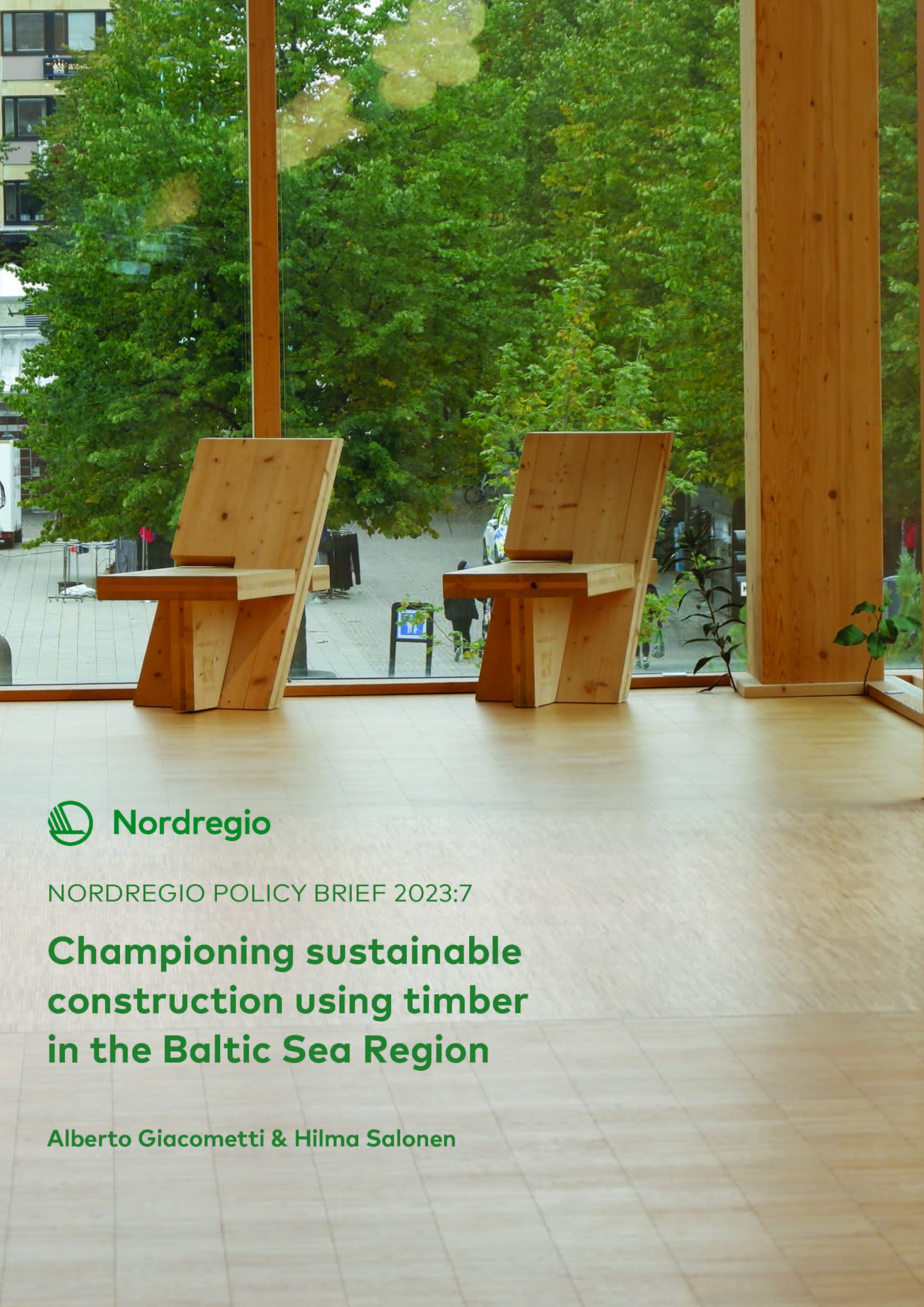Timber construction can radically cut carbon emissions. The construction sector is accountable for c. 40% of global emissions, a third of which comes from the production of building materials. Replacing concrete and steel with timber offers a huge opportunity to reach the carbon neutrality goals – so what is stopping us? In this policy brief, we uncover bottlenecks in timber construction in relation to technology, public sector and institutional innovation, cultural shifts, and systemic phenomena.
Nordic and Baltic countries have a unique advantage in leading the way, given the vast forest resources available, a long legacy of the forestry industry and wood building, the in-built industrial capacity, and the well-functioning and interlinked supply chains across the Baltic Sea Region (BSR). Yet, decisive policy measures are needed to overcome technical, regulatory, and cultural obstacles. Challenging the status quo and creating a market shift demands holistic and collaborative approaches that can enable systemic change, as well as targeted measures to navigate through country-specific obstacles.
This policy brief is based on the results of two projects: 1) Systems perspectives on Green Innovation (GRINGO) a research study conducted within the Nordic Thematic Group for Green, Innovative and Resilient Regions 2021-2024 and funded by the Nordic Council of Ministers; and 2) BSRWood project funded by the Swedish Institute to enhance collaboration and knowledge transfer across the Baltic Sea Region (BSR). In addition to desk study, interviews, workshops, and study tours with many experts from different organisations and countries served to collect multiple perspectives for how to address the bottlenecks in timber construction.








